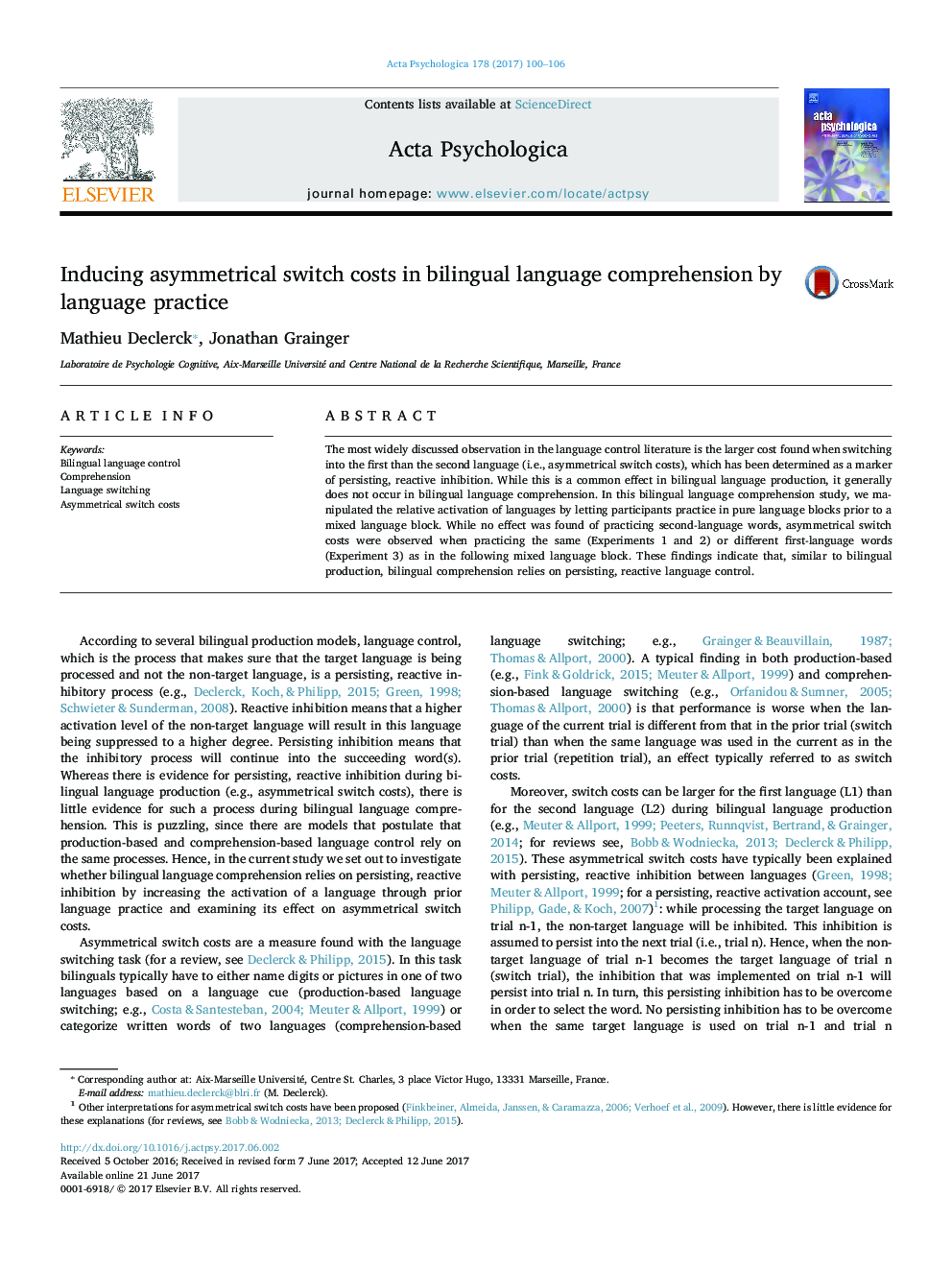| Article ID | Journal | Published Year | Pages | File Type |
|---|---|---|---|---|
| 5040301 | Acta Psychologica | 2017 | 7 Pages |
â¢Asymmetrical switch costs are usually only found in production, not comprehension.â¢Here we wanted to induce asymmetrical switch costs by prior language practice.â¢Observing such a pattern would be an indication for persisting, reactive inhibition.â¢The results showed asymmetrical switch costs with a comprehension task.
The most widely discussed observation in the language control literature is the larger cost found when switching into the first than the second language (i.e., asymmetrical switch costs), which has been determined as a marker of persisting, reactive inhibition. While this is a common effect in bilingual language production, it generally does not occur in bilingual language comprehension. In this bilingual language comprehension study, we manipulated the relative activation of languages by letting participants practice in pure language blocks prior to a mixed language block. While no effect was found of practicing second-language words, asymmetrical switch costs were observed when practicing the same (Experiments 1 and 2) or different first-language words (Experiment 3) as in the following mixed language block. These findings indicate that, similar to bilingual production, bilingual comprehension relies on persisting, reactive language control.
